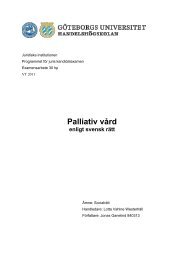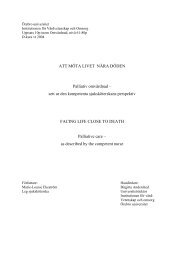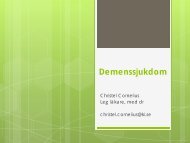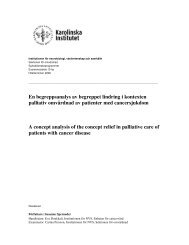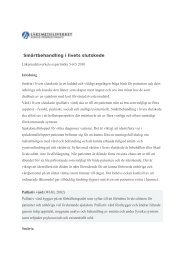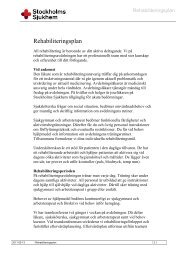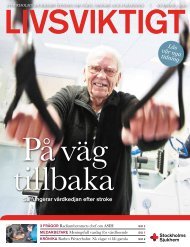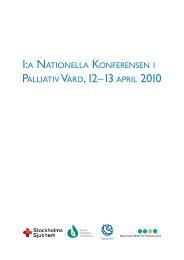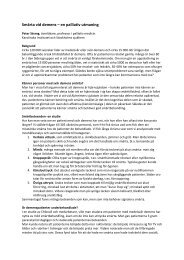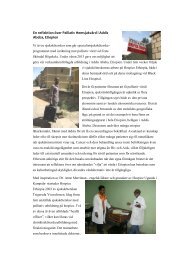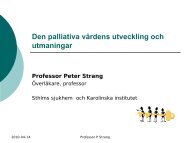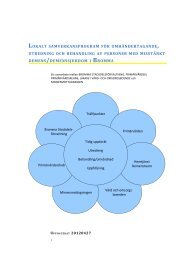Physiotherapy in palliative careâ - Stockholms sjukhem
Physiotherapy in palliative careâ - Stockholms sjukhem
Physiotherapy in palliative careâ - Stockholms sjukhem
You also want an ePaper? Increase the reach of your titles
YUMPU automatically turns print PDFs into web optimized ePapers that Google loves.
Heat and coldTreatment with heat <strong>in</strong>creases the circulation locally where the heat is applied and it has arelax<strong>in</strong>g effect on the muscles. Cold can be used as pa<strong>in</strong> relief <strong>in</strong> an acute <strong>in</strong>jury and reduce theswell<strong>in</strong>g that occurs and that can cause pa<strong>in</strong>. (28)Assessment:Check if the patient has <strong>in</strong>tact sensitivity and can judge if the temperature is appropriate.Treatment:Heat is often used to ease pa<strong>in</strong> like a hot pack, or a moist towel put <strong>in</strong> a plastic bag <strong>in</strong> the microwhich is easy to use and has a relax<strong>in</strong>g effect.Cold is not applied as often but can be used when an acute <strong>in</strong>jury occurs.Accord<strong>in</strong>g to cl<strong>in</strong>ical experience the feel<strong>in</strong>g of pa<strong>in</strong> is reduced when the hot pack is applied andstill warm.TENS‐ trans cutan electric nerv stimulationTENS activates the body’s own system to reduce pa<strong>in</strong>. With high frequency stimulus impulsessent to the nervous system the pa<strong>in</strong> reduc<strong>in</strong>g mechanisms blocks the pa<strong>in</strong> through a so calledgate-control. With low frequency stimulus endorf<strong>in</strong>es are set free which ease the pa<strong>in</strong>. TENScan be used with nociceptive and with neurogenic pa<strong>in</strong>. (26, 29)Assessment:It is important that the patient can expla<strong>in</strong> about the area of pa<strong>in</strong> to decide if the <strong>in</strong>tensity of theTENS- stimulation is correct. Check that the patient has sensibility. Contra <strong>in</strong>dications are thesame as with other patients that have pa<strong>in</strong>.Treatment:It might be necessary to test the <strong>in</strong>tensity several times before f<strong>in</strong>d<strong>in</strong>g the correct placement ofthe electrodes <strong>in</strong> order for TENS to give the best pa<strong>in</strong> relief. After <strong>in</strong>structions TENS can beused by the patient and that gives the patient the possibility to get better control of the pa<strong>in</strong>. Theelectrodes can sit dur<strong>in</strong>g the whole day and the patient can start the treatment by himself whenthe pa<strong>in</strong> starts.<strong>Physiotherapy</strong> <strong>in</strong> <strong>palliative</strong> care – a cl<strong>in</strong>ical handbook Ulla Frymark, Lilian Hallgren, Ann‐Charlotte Reisberg 23



